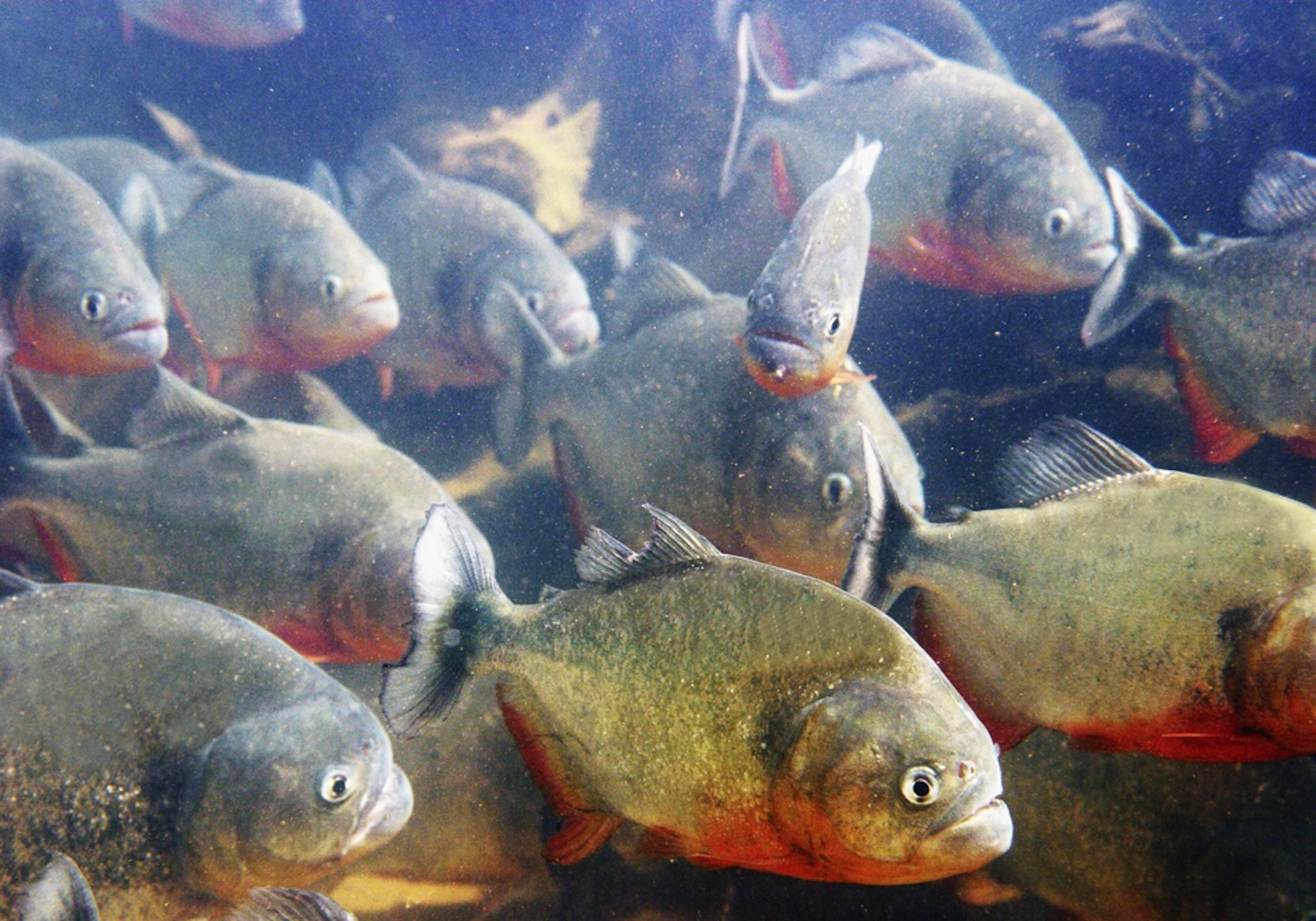
Piranhas Bark—Three Fierce Vocalizations Deciphered
Underwater microphones pick up limited—and uniformly grumpy—"vocabulary."
Piranhas, it turns out, can be excellent communicators, a new study suggests. But don't get the idea they're going soft—their barks, croaks, and clicks likely mean "leave me alone," "I might bite you," or "now I'm really angry!"
Video: Three Piranha Vocalizations
Researchers knew picking up red-bellied piranhas—among the few piranhas dangerous to humans—could prompt croaks from the fish. Even so, no one had studied their sounds in water or provided good evidence for the barks' evolutionary role.
Now a fish tank, an underwater water microphone, and a video camera have helped uncover three different piranha calls—all tied to a variety of grumpy behaviors.
"We knew piranhas were able to make sounds but were not satisfied with the explanation for how they do it," said biologist Eric Parmentier of the Université de Liège in Belgium. "We wanted to know how they do this and what these sounds might mean to other fish."
(Piranha pictures: See the fossil "megapiranha" species.)
Piranha Translator?
Twenty-five species of piranhas exist in the wild today, but only "two or three" species pose a threat to humans, Parmentier said. (Video: Piranha Bite Force.)
In particular, the red-bellied piranha's voracious appetite for fresh meat is a big reason many scientists have shied away from studying any in-water vocalizations, he added.
Parmentier and study co-author Sandie Millot of the University of Algarve in Portugal, though, used their tech-heavy technique to link three distinct sounds to three aggressive piranha behaviors.
A repetitive grunt was tied to a visual face-off, as if to say, "get away from me."
A second call resembling a low thud was associated with circling and fighting with other fish. Both of these calls, the researchers discovered, were made using a fast-twitching muscle that runs along a piranha's swim bladder—an air-filled organ that helps fish maintain their buoyancy.
If fellow piranhas didn't heed these warning calls, the aggressor would begin chasing the neighboring fish and making a third type of sound by faintly gnashing teeth.
(See piranha pet video from National Geographic.)
Expanding the Piranha Lexicon?
In the future, Parmentier and Millot would like to go to South America to record the red-bellied piranhas—and the other couple of dozen piranha species—in their native environment.
"The nature of these fishes are quite special, and I suspect they can make more than three sounds," Parmentier said, adding that they may also use them for hunting or mating. "Also, there are only recordings for a few species of piranhas.
"We'd like to see what other species are capable of."
The piranha-barking study was published online today in the Journal of Experimental Biology.




